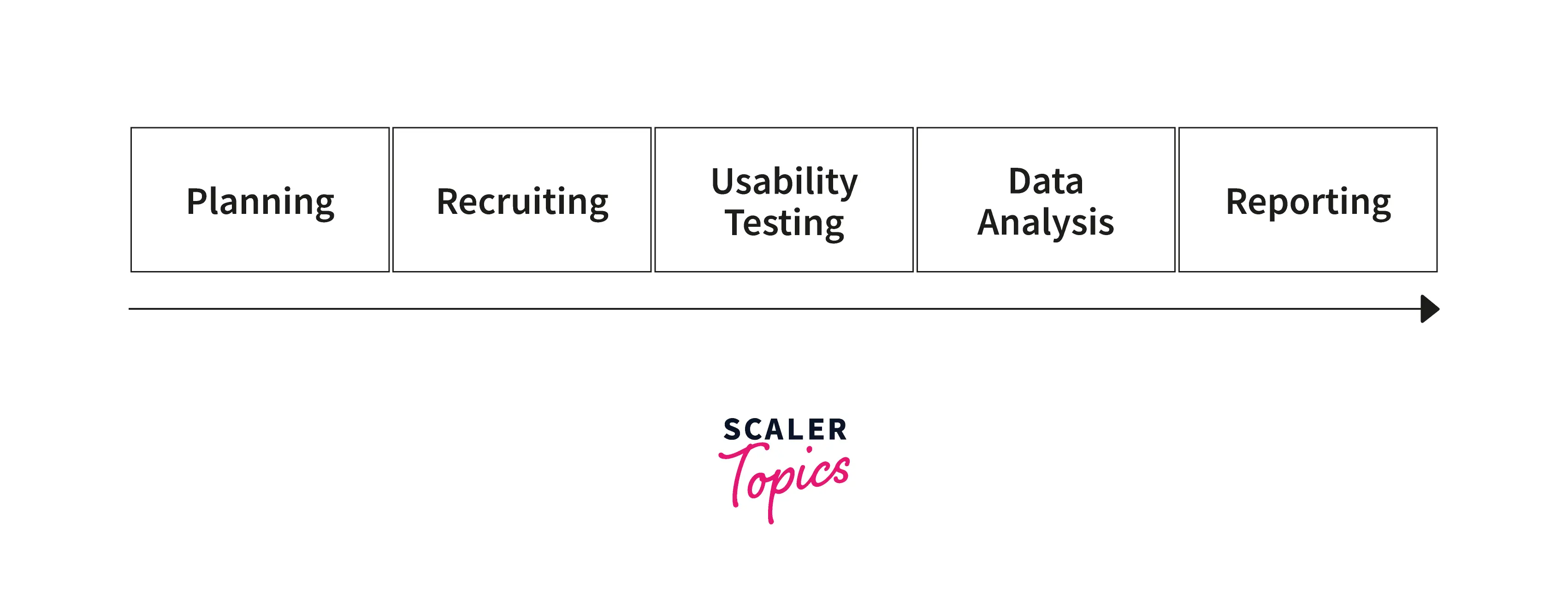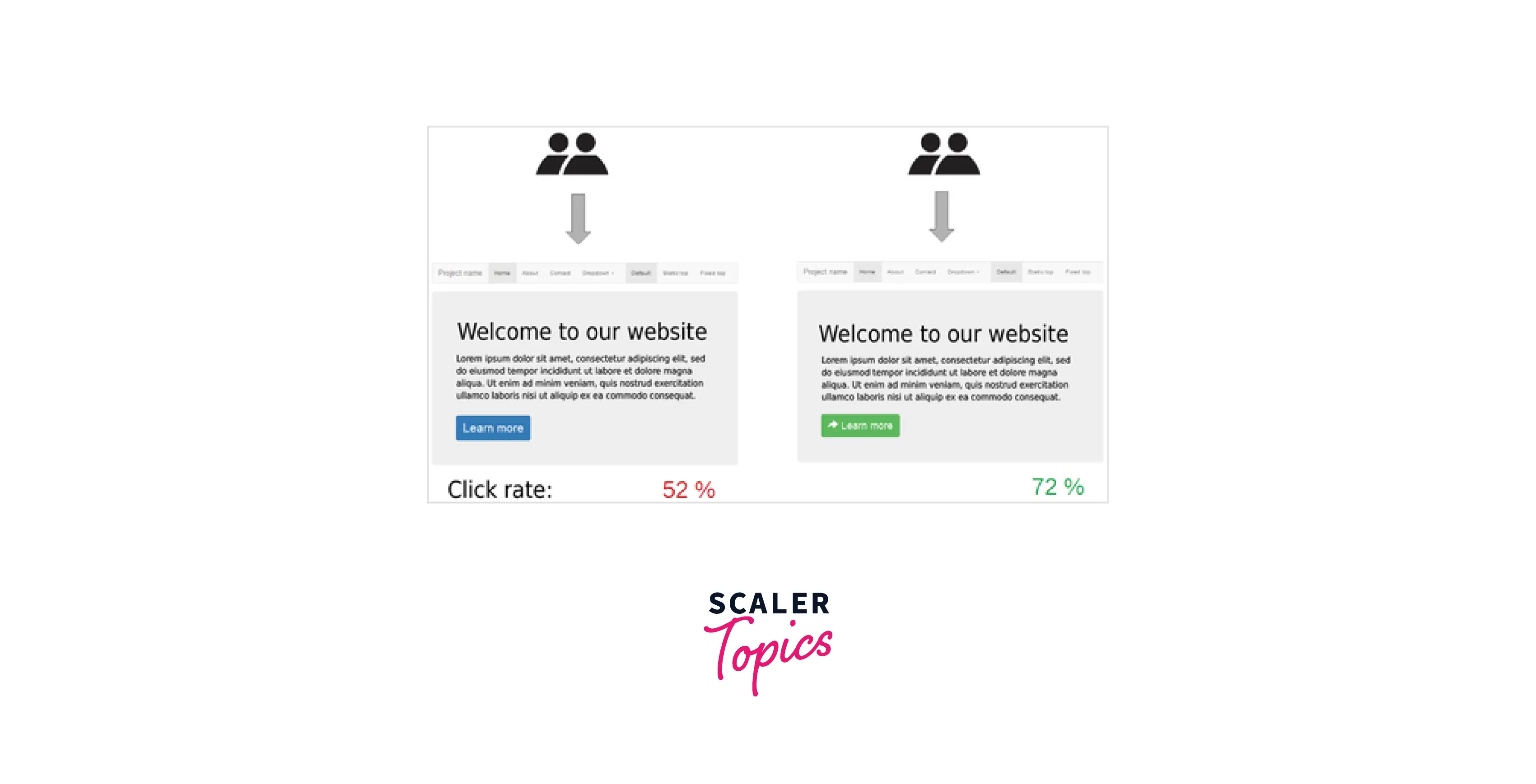Usability Testing in Software Testing
Overview
Usability testing is done to validate how user-friendly the product is. Important to note here is that usability testing cannot be done via scripts. It has to be manually done. Usability is the most important parameter to differentiate a product. For instance, there are so many UPI applications in the market, but the most user-friendly ones continue to dominate the market share.
What is Usability Testing?
Usability testing is a software testing methodology where the product is tested for user-friendly behavior. The defect is reported if the font size, color, typography, and ease of using the application have issues. Usability testing focus on the user experience as every placement affects the business application. For instance, the logout option is always placed below so that users never log out.
What is the Purpose of Usability Testing?
- Usability testing is done on the earlier stages of the product before final implementation starts
- Usability testing is done on the prototype to ensure the final product is user-friendly
- Usability testing adds a Unique Selling Point to the product to differentiate products in the similar category
- The high competition market makes it mandatory for the client to have a simpler and smoother interface.
- In the future, you cannot make major changes to the UI as people are already comfortable with the existing one.
Features of Usability Testing
-
Effectiveness of the system. How easy is it for the user to operate the application.
-
Efficiency of the application. Is the user able to easily navigate to the desired webpage or the link he was looking for.
-
Accuracy of the application is equally important. There shouldn't be any broken links. The system should be reliant.
-
System has to be user-friendly. No advanced terms. Users must not require formal training to operate the application.
Phases of Usability Testing
 1. Requirement Analysis: The initial step is clearly understanding the client's requirements. What is the issue product is trying to resolve, and is the center of the application. Understanding functional requirements, non-functional requirements, and market analysis are all crucial.
1. Requirement Analysis: The initial step is clearly understanding the client's requirements. What is the issue product is trying to resolve, and is the center of the application. Understanding functional requirements, non-functional requirements, and market analysis are all crucial.
2. Test Case Designing: The usability test cases are all manual test cases. Finding experienced manual testing and having good design knowledge is crucial. Usability testing is mostly R&D based task. One needs to do a thorough market and competitor analysis.
3. Test Cases: Test cases development to have maximum test case coverage. This needs to ensure all the features are covered, like memorability and efficiency, and the product is error-free. The same product in different screen sizes should provide a good experience.
4. Data Analysis: Usability testing is all about data analysis. How much time does the user take to reach the payment screen in multiple options of UI derived. The impact of advertisements in particular sections of the product on revenue. Changing certain features has helped gain/lose traffic.
5. Report Generation: Reports give a clear understanding of the entire STLC. The gain/loss is evident. Having experimented with the user interface in starting stage is mandatory. Otherwise, at a later stage, it could have adverse damage and impact on the company.
Parameters Covered by Usability Testing
- Efficiency: Efficiency of the product is how well the product works without making mistakes. The application should allow the user all the features of edit/delete. Users should be free to make mistakes, make changes, and edit on the same screen he is.
- Memorability: Application shouldn't be too hard to use. For instance, the logo is always home. Contact us, the about section is always at the bottom. In the menu, the logout option is always at the bottom. So, these norms should be followed so that the user can freely navigate to the screen of his choice.
- Accuracy: The application should be accurate. Everything has to be accurate, including calculations, promo codes, and taxes. The product needs to be secured and bug-free, for that matter. Every little piece of information that is displayed must be correct.
- Learnability: The application should be able to learn user's choices and patterns, and that is possible because of artificial intelligence and machine learning technology. All the products nowadays must have a learning model which has been well-trained as well.
- Satisfaction: There has to be a sense of satisfaction for the user using the product. A product that is slow, non-reliable, or has too many advertisements would automatically be a non-pleasant experience for the user. For instance, a user wants to order food from zomato. He installs the application and does simple mobile authentication. But if the application had a huge form to fill, the user would switch the application in no time.
- Errors: A bug-free application is a must. The application has to be well-tested for all the parameters. If payment is not made, money must not be deducted—subscription when expires again, money must not be deducted. The user must have confidence in the application, hence the company.
Methods of Usability Testing
-
A/B Testing: A/B testing involves creation of multiple design images of the product. Designers is a profile in the development industry whose job is to create these image prototypes of where the button, image, carousel, and dropdown should be. It gives a comparative narrative for text and sizing and significantly reduces development costs.

-
Hallway Testing: Hallway testing lets genuine users test the product. The users are unskilled professionals, and their interaction and experience are noted. Are they able to navigate to the site, what is their feedback, do they find the product slow, etc. This lets the developer see multiple environments on which the product is being operated as everyone would have different mobile, internet, age, skills, etc.
-
Laboratory Usability Testing: Laboratory usability testing is usability testing being done in front of actual users. The beauty of it is that users would be able to give direct feedback to the testers so they can add/remove test scenarios. It improves the team's confidence and gives market insight as well.
-
Expert Review: Expert Review is software testing done by experienced testers with many years of experience in similar domains. If you check any quality analysts in the IT industry, they have tested banking domain softwares for only 15 years. The amount of credibility, experience, and skills a person brings to the team is unmatched.
-
Automated Expert Review: Automated expert review is scripts written with some design logic. For instance, the code is written to ensure the images are not pixelated or the color hue is below visibility levels. Even google uses scripts for SEO to give SEO for your site where performance and other font parameters are validated using automation.
-
Synchronous Remote Usability Testing: Usability testing done by the testers at remote location. Hence they are in different time zones, demographic, language preferences, and cultural and educational backgrounds. The parameters like the facial expression in different climates, skin tone, speech to text validations are done. Synchronous because they are done in real-time.
-
Asynchronous Remote Usability Testing: Asynchronous Usability testing is done when testers are at a remote location. Here Asynchronous means that first users of one demographic are tested, then the other. It is not done simultaneously, but after one demographic is validated, it moves to another remote location.
Examples of Usability Testing
Suppose there is a gaming application heavy on animations and designs. Usability testing is done by users of age between 6-18 years. They have been given 3 hrs to play and compete, and then their feedback is noted on: design, animations, ease to use, understanding of the game's rules, excitement, thrill, competitiveness, etc.
Another example is a new UPI application being tested by a bank manager, 65 years old woman, and a ten-year-old child. The team of testers noted their ease, comfort, trust, usage of terms OTP, PIN, and feedback. Testers generate a report and send the feedback to the manager and developer team.
Usability Testing Advantages and Disadvantages
Advantages
- Usability testing gives real-time feedback to the development team about market validation.
- Usability testing is cheaper at the development stage as once the product reaches production, exponential money investment is required.
- It helps to make the product efficient and applicable.
Disadvantages
- Usability testing increases the budget and time manifolds which is tough for any startup.
- Usability testing can lead to the leak of private information about the product and company.
- Finding the correct users is always challenging as everyone works in a fixed job. So, finding good volunteers is tough.
Conclusion
- Experienced testers or regular users do usability testing to validate the product's user experience.
- It makes the product much more efficient and reliable.
- Usability testing increases the time and budget of the product.
- Finding suitable volunteers for the product is always a challenge.
